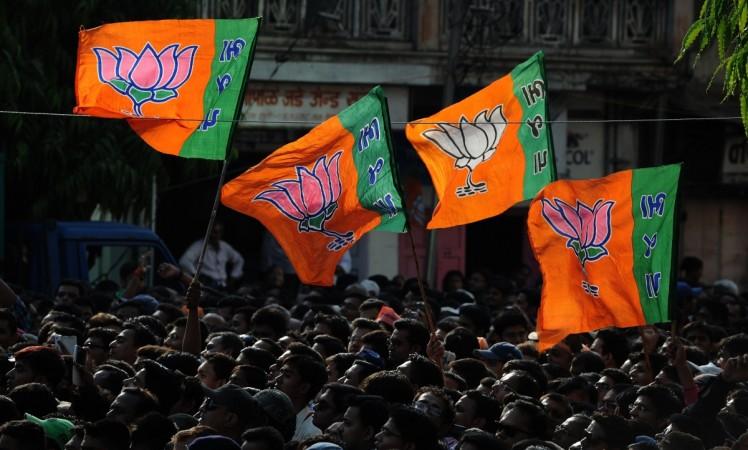
'Congress-mukt Bharat' was one of Bharatiya Janata Party's slogans ahead of the general elections in 2014. After a thumping victory, the BJP-led NDA formed government at the Centre with Narendra Modi as prime minister. Since then, the saffron party went on a winning spree and formed governments in 22 states across the country under the leadership of party's national president Amit Shah.
Now, the Congress is left with four states in its hold. With Karnataka going for polls on May 12, people are inquisitive if BJP will succeed in their mission or not.
But Karnataka is a tough nut to crack for Narendra Modi and Amit Shah. The reason is Chief Minister Siddaramaiah is believed to have delivered a corruption-free and pro-poor governance in the last five years. Besides, he has also tried to woo Lingayat and Veerashaiva communities that voted the BJP to power before Siddaramaiah-led Congress formed the government in the state.
The demographics of the state have changed drastically, as per leaked statistics of the Karnataka caste census. These stats show that Congress has an advantage over BJP in forming the next government. But many of the pre-poll surveys show Karnataka will have a hung assembly and JDS would play the kingmaker in forming the next government.
However, the BJP will emerge as the winner with a simple majority.
Here are 5 reasons why BJP may form the next government:
History of anti-incumbency in Karnataka
Karnataka has a history of anti-incumbency and the people have been voting out the ruling party since 1985. Voters from the upper castes feel Chief Minister Siddaramaiah ignored their communities and only provided freebies for minorities and backward classes. His appeasement politics has upset many of them across the state. Promising reservation for the Lingayats has sent out a wrong message.
Karnataka has been hit by drought for the last four consecutive years and Siddaramaiah government did little to improve the rural economy. The state witnessed a spate of farmers' suicides.
The law and order also deteriorated in the state. These and few other aspects have angered various sections of people who might vote to BJP to power.
Modi wave
Narendra Modi is a master orator, and it is one of the main reasons why he enjoys such a massive following. His popularity or popularly called 'Modi wave' was evident in 2014 where the BJP swept the Lok Sabha polls by winning 22 seats out of 28.
The cadres are betting on the same wave for the Assembly elections now.
BS Yeddyurappa and Sriramulu's return to BJP
Hyderabad Karnataka and Mumbai Karnataka have been the strongholds of the BJP as Sriramulu and BS Yeddyurappa command a significant influence in the regions. Their departure cost the BJP in the last assembly elections.
Before 2014 general elections, Narendra Modi and Amit Shah brought them into the party-fold. Their return coupled with Modi wave yielded great results as the party won 22 Lok Sabha seats.
The top guns are expected to recreate the magic for the Karnataka Assembly elections as well.
BJP's new Lingayat+Brahmin+Vakkaliga+Dalit strategy
Caste plays a crucial role in Karnataka politics. In the earlier elections, BJP tried to woo voters from Lingayat, Brahmin and Vakkaliga communities but it tweaked the strategy this time. The latest caste census conducted by Siddaramaiah's government showed that Dalit community has the highest number of voters in the state. Hence, the party shifted focus towards Dalits as they can make or break an election. During the campaigns, as part of their strategy, BJP slammed Congress for sidelining senior Dalit leader Mallikarjuna Kharge.
BJP party's organisational structure
The BJP as a party is said to be more organised and it built a strong cadre since 2014 from booth level to constituency level. Moreover, the party enjoys a large number of voluntary workers from its ideological mentor RSS and affiliate groups. They are striving hard at the grassroots to influence the voters.








